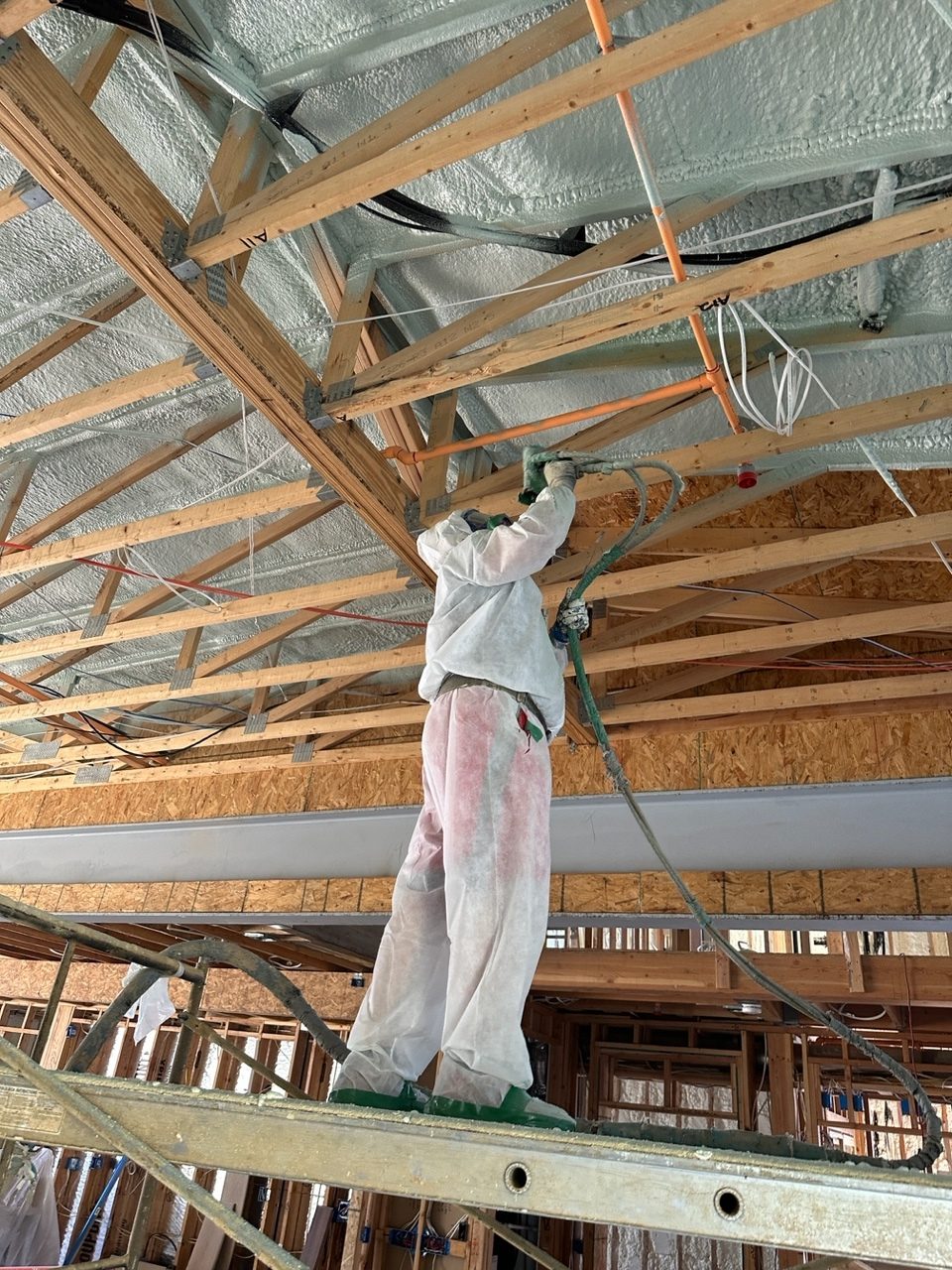Spray foam insulation and vented attic play starring roles. By Doug Brady
xxxxx
Rebuilt for Improved Comfort, Thermal Performance and Air Quality
Rebuilt for Improved Comfort, Thermal Performance and Air Quality
Spray foam insulation and UNVENTED attic play starring roles. By Doug Brady
With some homes, it is all about what lies below the surface. For building science experts Steve Easley and his wife, Susan Raterman, a Scottsdale, Ariz., home that has been their labor of love the past few years has proven exactly why that’s true. The reVISION House, a half-century-old residence the couple originally earmarked for a simpler remodel, has since been demolished down to the slab foundation to be rebuilt. Now nearly done, the home proves that, despite the beauty of the exterior, no home will age well if it is built with too little insulation, too much air conditioning and not nearly enough quality control.
Originally constructed in the 1970s on a lakeside lot, the home failed to prevent severe indoor temperature swings. Existing concrete tiles contributed, absorbing the region’s extreme heat and expending it nightly into the poorly insulated attic space. The result was soaring indoor evening temperatures up to 20 degrees higher than outdoor temperatures. Building envelope performance was obviously lackluster and thermal scans illustrated why.
“Our infrared imaging showed serious insulation voids, along with the infiltration of hot air around the home’s headers and sliding doors,” Easley says.


Preparing to Rebuild
Easley, the owner of Steve Easley & Associates, is an internationally recognized construction consultant and prolific speaker on building science topics. Together with Raterman, president of The Raterman Group and an expert on indoor air quality, they set four important goals for the home: enhanced energy efficiency, indoor air quality and comfort, along with long-term durability. However, after removing the drywall, the couple discovered lots of structural and insulation deficiencies. To achieve their energy goals, they would need to leverage high-performance materials.
“After assessing all of the issues this house had, we ultimately decided to take the home down to the slab foundation,” Easley says. “The floor plan upstairs was unusable and the upstairs HVAC was in a vented attic with leaky ducts. Excessive duct leakage created negative pressures. Hot air pulled into the home was increasing cooling loads, requiring a whopping eight tons of air conditioning, yet the interior could never get cooler than 84 degrees when outdoor temps were 110. It was very uncomfortable.”
A meaningful portion of the couple’s rebuild consisted of major upgrades to the floor plan, including the creation of a telecommuting hub, which consists of two soundproofed offices upstairs where the pair can each host their respective webinars, as well as a gym and guest bedroom and bathroom. However, another significant area of focus was enhancing the envelope to include 2x6 walls and an unvented attic, with the goal of minimizing the watt draw and size of the HVAC system, as well as the number of solar panels needed.



Putting Knowledge to Work
Easley is a longtime proponent of spray foam and, as a consultant, has even published articles on the benefits of both unvented attic design and spray foam insulation. It was not surprising he advocated for both in the home.
“Unvented attics and spray foam insulation are a fantastic combo for enhanced energy efficiency and reduced moisture issues in a home,” Easley points out. “Closed cell SPF also increases the wind uplift resistance up to 300 percent, making the home more resilient to storms.”
Brazos Thermal Systems Inc., the spray foam contractor active in both Arizona and California, was brought in for the job. Brazos’ team of professional spray foam installers was tasked with insulating the attic and ceilings to R-52. A high-performance option was used in a 2-inch application on the underside of all attic surfaces, as well as in a 2-inch application under the home’s hip and flat roofs to provide wind uplift resistance and additional R-value. A 10-inch application of an open cell SPF was applied in the attic. Three-and-a-half inches of the open cell spray foam was also used on the home’s exterior walls.
The Benefits of Spray Foam
“The high R-value per inch, air sealing properties and very low global warming potential of these insulations made them the perfect choice for insulating our home,” Easley adds.
“There’s no doubt the spray foam dramatically improves the indoor comfort and dramatically reduces energy consumption in this home,” says Craig Opel, owner of Brazos Thermal Systems. “This was a really great project for our team to be part of because, as a case study in energy efficiency, it showcases the true value spray foam delivers to the homeowner.”
A lot of the heavy lifting involved in the renovation is now behind Easley and Raterman. “We can rest easy knowing the energy performance and air quality in the house meets our exceptionally high standards,” Easley says. “Now we can focus on completing some of the final finishes and can enjoy living and working from this amazing home.”
References
- xxxxxxxxxxx
- xxxxxxxxxxx
Images courtesy of Huntsman Building Solutions.
Doug Brady is chief strategy officer with Huntsman Building Solutions, a global leader in energy efficient and resilient building envelope solutions. Contact him at dbrady@huntsmanbuilds.com.
Doug Brady is chief strategy officer with Huntsman Building Solutions, a global leader in energy efficient and resilient building envelope solutions. Contact him at dbrady@huntsmanbuilds.com.
